-
 Bitcoin
Bitcoin $114400
1.32% -
 Ethereum
Ethereum $3499
2.20% -
 XRP
XRP $2.922
4.26% -
 Tether USDt
Tether USDt $0.0000
0.03% -
 BNB
BNB $752.6
1.53% -
 Solana
Solana $161.8
1.64% -
 USDC
USDC $0.9999
0.01% -
 TRON
TRON $0.3267
1.32% -
 Dogecoin
Dogecoin $0.1991
3.02% -
 Cardano
Cardano $0.7251
3.29% -
 Hyperliquid
Hyperliquid $38.32
3.36% -
 Stellar
Stellar $0.3972
7.58% -
 Sui
Sui $3.437
2.74% -
 Chainlink
Chainlink $16.29
3.65% -
 Bitcoin Cash
Bitcoin Cash $545.3
3.70% -
 Hedera
Hedera $0.2482
7.49% -
 Ethena USDe
Ethena USDe $1.001
0.03% -
 Avalanche
Avalanche $21.40
2.02% -
 Toncoin
Toncoin $3.579
1.56% -
 Litecoin
Litecoin $109.3
2.20% -
 UNUS SED LEO
UNUS SED LEO $8.951
-0.18% -
 Shiba Inu
Shiba Inu $0.00001220
2.75% -
 Polkadot
Polkadot $3.613
2.99% -
 Uniswap
Uniswap $9.173
3.78% -
 Monero
Monero $302.6
2.62% -
 Dai
Dai $0.0000
0.00% -
 Bitget Token
Bitget Token $4.320
1.52% -
 Pepe
Pepe $0.00001048
3.40% -
 Cronos
Cronos $0.1314
4.33% -
 Aave
Aave $259.4
3.54%
What is the dividend distribution of Bitcoin ETFs?
Bitcoin ETFs don't pay dividends; returns come solely from Bitcoin's price appreciation, resulting in capital gains upon sale. Operational costs reduce net returns, and tax implications apply to these gains.
Feb 27, 2025 at 12:30 am

What is the Dividend Distribution of Bitcoin ETFs?
Key Points:
- Bitcoin ETFs, unlike traditional stock ETFs, do not distribute dividends in the traditional sense. This is because Bitcoin itself doesn't generate dividends or interest payments.
- Bitcoin ETF returns are primarily driven by the price appreciation of Bitcoin. Any gains are reflected in the ETF's Net Asset Value (NAV), leading to increases in the share price.
- Investors profit from Bitcoin ETF holdings through capital gains when they sell their shares at a higher price than their purchase price.
- Some complexities arise due to tax implications surrounding capital gains realized from selling ETF shares.
- The internal operational costs of managing a Bitcoin ETF are deducted from the fund's assets, indirectly impacting returns.
Understanding Bitcoin ETF Dividend Distribution (or Lack Thereof):
- The Nature of Bitcoin: Unlike dividend-paying stocks or bonds, Bitcoin is a decentralized digital currency that doesn't offer periodic payouts to holders. It operates on a proof-of-work consensus mechanism, where miners earn newly minted Bitcoin as a reward for securing the network, not as dividends paid to existing holders. This fundamental difference is crucial in understanding why Bitcoin ETFs don't pay dividends. The value of Bitcoin, and consequently a Bitcoin ETF, is entirely driven by market forces—supply, demand, adoption rate, regulatory changes, and macroeconomic conditions. It's a speculative asset whose primary appreciation comes from price increases, not income distributions. Therefore, expecting dividend payouts from a Bitcoin ETF is fundamentally misunderstanding the nature of the underlying asset. This contrasts sharply with traditional equity ETFs that invest in dividend-paying companies, where dividend income forms a significant component of the total return. The absence of dividends doesn't necessarily indicate a lack of profitability for the ETF; rather, it reflects the inherent characteristics of the underlying asset. The focus is on capital appreciation, not passive income streams. This necessitates a different investment strategy and expectation management compared to dividend-focused investments. Understanding this distinction is key to successful investing in Bitcoin ETFs. Investors should primarily anticipate gains from price appreciation, and not from regular dividend payouts.
- Return Mechanisms in Bitcoin ETFs: The primary mechanism for generating returns in Bitcoin ETFs is through the price appreciation of Bitcoin itself. As the price of Bitcoin rises, so too does the value of the ETF shares, reflecting the increase in the Net Asset Value (NAV) of the fund. This increase in NAV allows investors to sell their shares at a profit, realizing capital gains. This is the primary way investors profit from investing in Bitcoin ETFs. Therefore, the investment strategy revolves around buying low and selling high, capitalizing on the price fluctuations of Bitcoin. While there are no dividend distributions, the potential for significant capital gains is a major draw for many investors. This approach differs substantially from traditional dividend-paying investments where consistent income streams are a key feature. The volatility inherent in Bitcoin's price translates to a higher risk-reward profile for Bitcoin ETFs, making them suitable for investors with a higher risk tolerance and a longer-term investment horizon. Understanding this risk-reward dynamic is critical for making informed investment decisions. The absence of a dividend stream means investors are entirely reliant on price appreciation for returns. This necessitates a thorough understanding of market trends and Bitcoin's price drivers.
- Tax Implications of Bitcoin ETF Capital Gains: When investors sell their Bitcoin ETF shares at a profit, they realize capital gains, which are subject to taxation. The tax implications can vary depending on the investor's jurisdiction and the holding period of the shares. For instance, short-term capital gains (shares held for less than a year) are generally taxed at a higher rate than long-term capital gains (shares held for more than a year). Understanding these tax implications is crucial for effective financial planning. Investors should consult with tax professionals to understand the specific tax implications in their respective jurisdictions. Accurate record-keeping of all transactions related to Bitcoin ETF investments is essential for tax compliance. Tax planning should be an integral part of any investment strategy involving Bitcoin ETFs to minimize tax liabilities and optimize returns. The absence of dividend income doesn't eliminate tax obligations; instead, it shifts the tax burden to capital gains realized upon the sale of shares. This necessitates a different approach to tax planning compared to dividend-paying investments.
- Operational Costs and Expense Ratios: Bitcoin ETFs, like any other investment fund, incur operational costs associated with management, administration, and trading. These costs are deducted from the fund's assets, indirectly impacting the returns available to investors. The expense ratio, typically expressed as a percentage of the assets under management, represents the annual cost of owning the ETF. A higher expense ratio will result in lower net returns for investors. It's crucial to compare the expense ratios of different Bitcoin ETFs before making an investment decision. Lower expense ratios translate to higher net returns, while higher expense ratios can significantly erode the overall investment returns over time. Therefore, careful consideration of expense ratios is vital for making informed investment choices. The expense ratio is a crucial factor to consider alongside price appreciation when evaluating the overall profitability of a Bitcoin ETF investment. It represents an ongoing cost that directly reduces the net return to investors.
- No Reinvestment of “Dividends”: Because there are no dividends, there's no concept of reinvesting them. The growth of your investment solely depends on the increase in the value of the Bitcoin held within the ETF. This contrasts with dividend-paying ETFs where investors can often choose to reinvest dividends, leading to compounding growth. In Bitcoin ETFs, any growth is realized only upon selling the shares. This further underscores the importance of a long-term investment strategy and understanding the price volatility of Bitcoin. The absence of reinvestment options means investors need to be more strategic in their approach to capitalizing on potential growth.
FAQs:
Q: Are there any potential future scenarios where Bitcoin ETFs might distribute dividends?
A: Currently, there's no foreseeable mechanism for Bitcoin itself to generate dividends. The inherent nature of Bitcoin as a decentralized digital currency prevents the distribution of regular income payments. Any future development that might alter this fundamental characteristic would require significant changes to the core Bitcoin protocol, which is unlikely. However, future innovations in the cryptocurrency space could potentially lead to derivative products or investment vehicles related to Bitcoin that offer different income streams, though these wouldn't be dividends from Bitcoin itself.
Q: How do I calculate the total return on my Bitcoin ETF investment?
A: The total return is calculated by considering the initial investment, the final sale price of the ETF shares, any fees paid (including expense ratios), and any capital gains taxes incurred. It's not a simple matter of just comparing the purchase and sale prices, as various other factors influence the overall return. This necessitates careful record-keeping and potentially professional financial advice to accurately assess the total return on investment.
Q: Are Bitcoin ETFs suitable for all investors?
A: No. Bitcoin ETFs are considered high-risk investments due to the inherent volatility of Bitcoin's price. They are generally suitable for investors with a higher risk tolerance, a longer-term investment horizon, and a thorough understanding of the cryptocurrency market. Conservative investors seeking stable income streams should avoid Bitcoin ETFs.
Q: What are the risks associated with investing in Bitcoin ETFs?
A: The primary risk is the volatility of Bitcoin's price. Market fluctuations can lead to significant losses in a short period. Regulatory uncertainty surrounding cryptocurrencies also poses a risk, as changes in regulations can significantly impact the value of Bitcoin and Bitcoin ETFs. Security risks associated with cryptocurrency exchanges and custodians are another concern. Investors should carefully evaluate these risks before investing.
Q: How do I choose a Bitcoin ETF?
A: When choosing a Bitcoin ETF, consider factors such as the expense ratio, the fund's investment strategy, the custodian's reputation, and regulatory compliance. Comparing various Bitcoin ETFs based on these factors is essential for making an informed investment decision. Consulting with a financial advisor can also be beneficial.
Disclaimer:info@kdj.com
The information provided is not trading advice. kdj.com does not assume any responsibility for any investments made based on the information provided in this article. Cryptocurrencies are highly volatile and it is highly recommended that you invest with caution after thorough research!
If you believe that the content used on this website infringes your copyright, please contact us immediately (info@kdj.com) and we will delete it promptly.
- BCUT: Support Holds, Accumulation Hints at Potential Reversal
- 2025-08-04 10:50:12
- Bitcoin's Bullish Expansion: Decoding Bollinger Bands and Whale Bets
- 2025-08-04 10:55:12
- XRP, Solana, and Whales: Decoding the Crypto Tides
- 2025-08-04 11:10:11
- BlockDAG's Grand Finale: Auction Fever and the Dawn of a New Era
- 2025-08-04 10:30:12
- Kaia Files: Will South Korea Embrace a KRW-Pegged Stablecoin?
- 2025-08-04 10:30:12
- Kaspa, HBAR, and Cold Wallet: A New York Minute on Crypto's Latest Moves
- 2025-08-04 09:11:54
Related knowledge
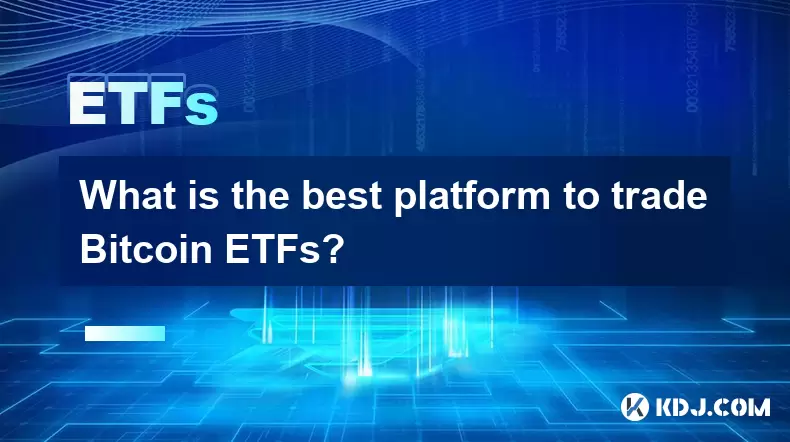
What is the best platform to trade Bitcoin ETFs?
Jul 23,2025 at 04:14am
Understanding Bitcoin ETFs and Their Role in TradingBitcoin Exchange-Traded Funds (ETFs) have gained significant traction among traditional and crypto...
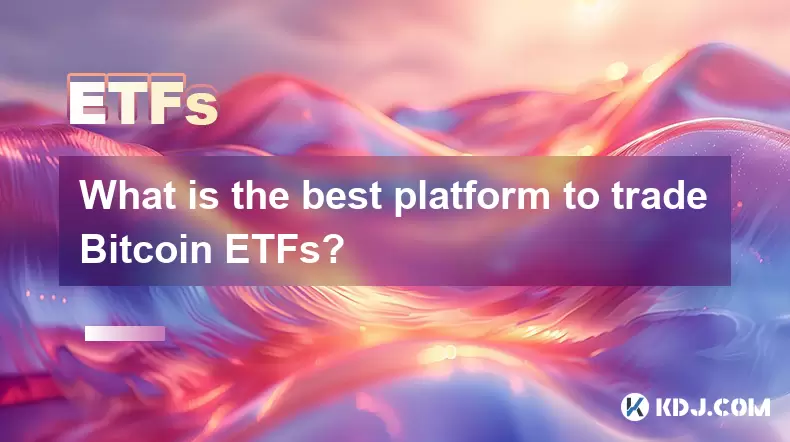
What is the best platform to trade Bitcoin ETFs?
Jul 17,2025 at 03:50pm
Understanding Bitcoin ETFs and Their Role in the MarketBitcoin Exchange-Traded Funds (ETFs) are investment vehicles that track the price of Bitcoin wi...

Will a Bitcoin ETF be available in my 401(k)?
Jul 17,2025 at 10:42pm
What is a Bitcoin ETF?A Bitcoin ETF (Exchange-Traded Fund) is an investment vehicle that tracks the price of Bitcoin without requiring investors to di...
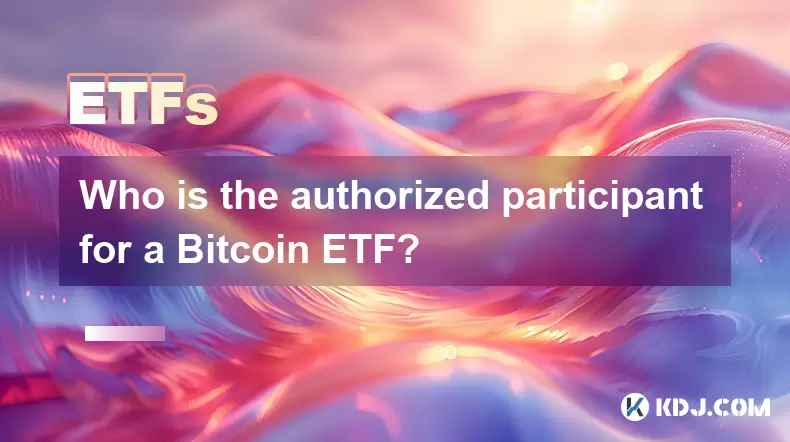
Who is the authorized participant for a Bitcoin ETF?
Jul 18,2025 at 12:42am
Understanding the Role of Authorized Participants in Bitcoin ETFsIn the context of Bitcoin Exchange-Traded Funds (ETFs), an authorized participant (AP...
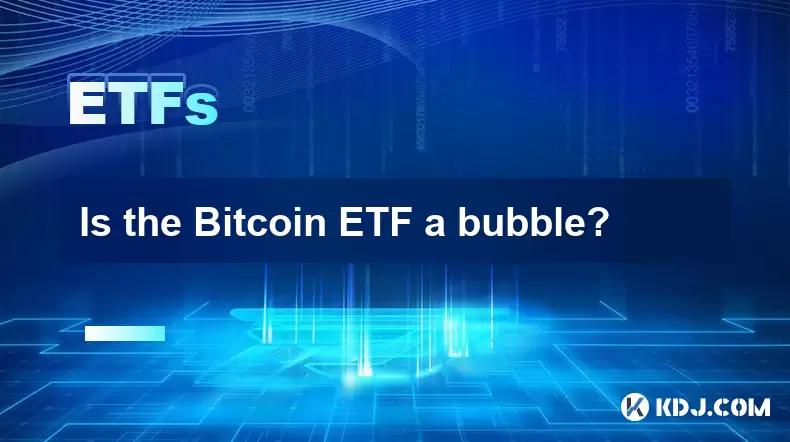
Is the Bitcoin ETF a bubble?
Jul 20,2025 at 06:57am
Understanding the Bitcoin ETF ConceptA Bitcoin Exchange-Traded Fund (ETF) is a financial product that aims to track the price of Bitcoin without requi...
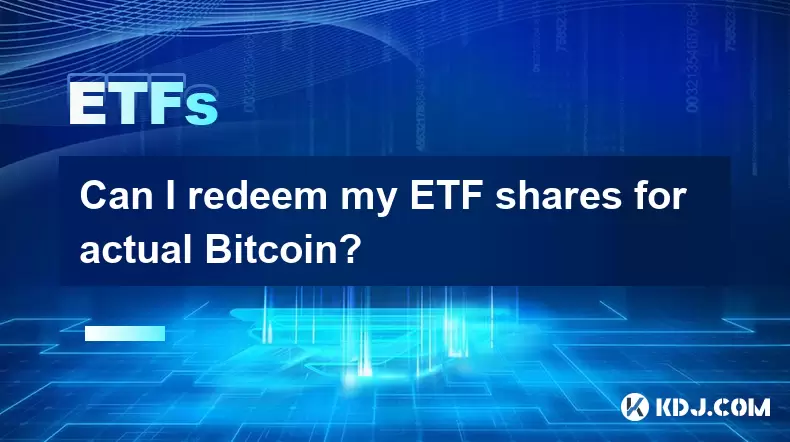
Can I redeem my ETF shares for actual Bitcoin?
Jul 17,2025 at 03:14pm
Understanding ETF Shares and Their Relation to BitcoinExchange-Traded Funds (ETFs) have become a popular investment vehicle for those looking to gain ...

What is the best platform to trade Bitcoin ETFs?
Jul 23,2025 at 04:14am
Understanding Bitcoin ETFs and Their Role in TradingBitcoin Exchange-Traded Funds (ETFs) have gained significant traction among traditional and crypto...

What is the best platform to trade Bitcoin ETFs?
Jul 17,2025 at 03:50pm
Understanding Bitcoin ETFs and Their Role in the MarketBitcoin Exchange-Traded Funds (ETFs) are investment vehicles that track the price of Bitcoin wi...

Will a Bitcoin ETF be available in my 401(k)?
Jul 17,2025 at 10:42pm
What is a Bitcoin ETF?A Bitcoin ETF (Exchange-Traded Fund) is an investment vehicle that tracks the price of Bitcoin without requiring investors to di...

Who is the authorized participant for a Bitcoin ETF?
Jul 18,2025 at 12:42am
Understanding the Role of Authorized Participants in Bitcoin ETFsIn the context of Bitcoin Exchange-Traded Funds (ETFs), an authorized participant (AP...

Is the Bitcoin ETF a bubble?
Jul 20,2025 at 06:57am
Understanding the Bitcoin ETF ConceptA Bitcoin Exchange-Traded Fund (ETF) is a financial product that aims to track the price of Bitcoin without requi...

Can I redeem my ETF shares for actual Bitcoin?
Jul 17,2025 at 03:14pm
Understanding ETF Shares and Their Relation to BitcoinExchange-Traded Funds (ETFs) have become a popular investment vehicle for those looking to gain ...
See all articles

























































































